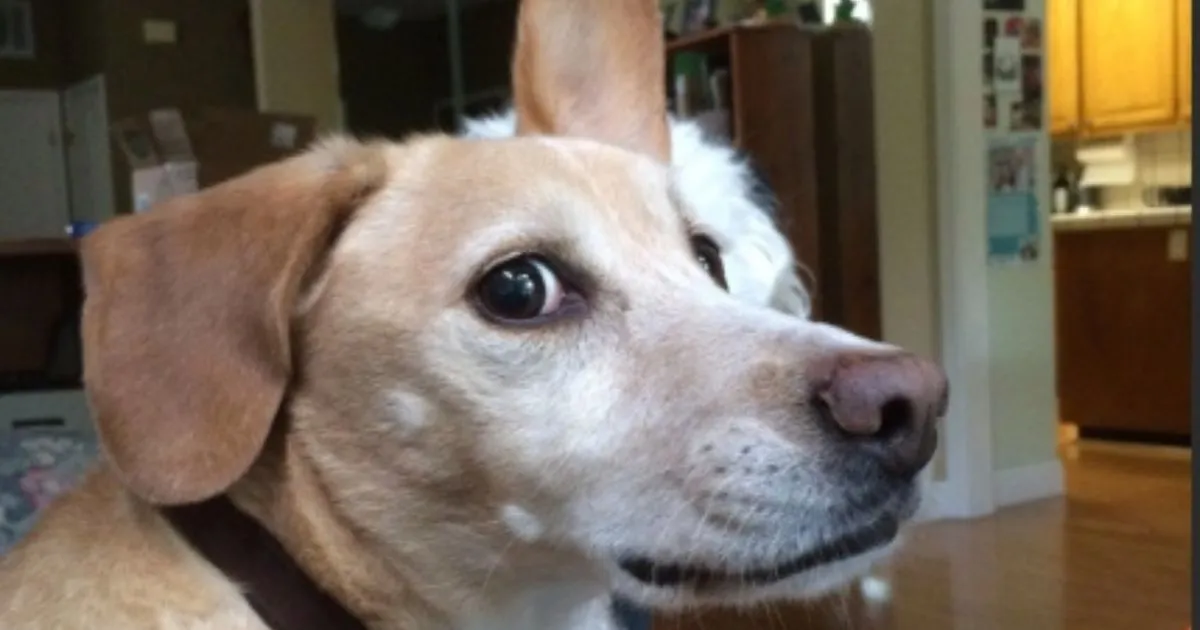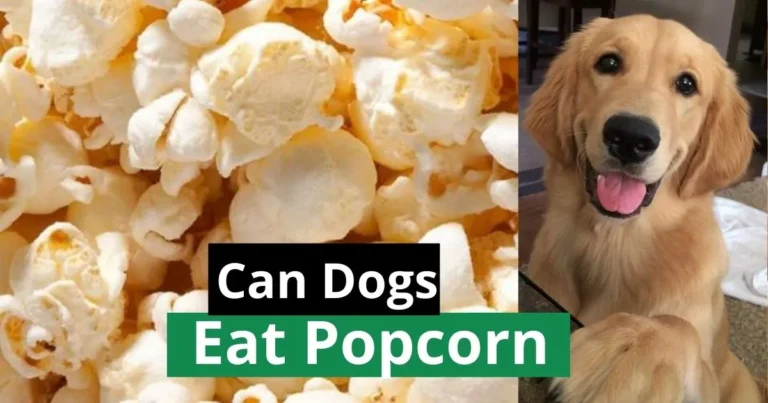Why Does My Dog Give Side Eye? Understanding the Behavior
Table of Contents
Why Does My Dog Give Side Eye?
Ever caught your dog giving you a side eye? It’s a way dogs communicate that can tell you a lot. It shows their feelings and what they might want. Knowing about this can help you understand your dog better.
Dogs talk a lot through body language, and side eye is especially interesting. It can show how your dog is feeling. Whether it’s in a photo or in real life, a side eye can mean anything from feeling uneasy to being curious.
Key Takeaways
- Side eye is a critical form of canine communication
- Dogs use eye movements to express various emotions
- Understanding side eye can improve pet-owner relationships
- Context is crucial when interpreting dog body language
- Side eye can signal different emotional states
What Is Dog Side Eye and Why It Matters
Dogs doing side eye is more than cute. It shows deep insights into their emotional state. When they look sideways without moving their head, they send a complex message.
Understanding this requires watching their body language closely. It’s a way dogs share their thoughts and feelings. They might show mild discomfort or subtle wariness.
Decoding the Sideways Glance
The side eye in dogs typically involves:
- A subtle eye movement to the side
- Minimal head rotation
- Partial visual tracking without direct confrontation
Canine Communication Through Facial Expressions
Dogs use facial expressions to communicate. Side eye is a key non-verbal signal. It lets them:
- Assess threats without direct engagement
- Share subtle emotional states
- Express complex social dynamics
By noticing these signals, you can understand your dog better. This strengthens your bond with them.
The Science Behind Side Eye Dog Behavior
Dogs talk to us in many ways, and side eye is a key part of their language. Scientists say this eye movement comes from their long history. It’s not just a random look; it’s a smart way dogs have learned to communicate over time.
Experts believe side eye means different things to dogs. It can show how they feel and what they want. It’s a detailed way of saying things without words.
- Evolutionary adaptation for social communication
- Subtle method of expressing emotions
- Strategic way of gathering information without direct confrontation
Studies have shown why dogs use side eye. Researchers found it means a few important things:
- They’re paying close attention to what’s around them
- They might be feeling a bit anxious or unsure
- It’s a safe way to check out social situations
“Dogs have mastered the art of communication through subtle eye movements, making side eye a powerful tool in their social vocabulary.” – Dr. Sarah Rodriguez, Canine Behavior Specialist
So, when your dog gives you a side eye, it’s not just for show. It’s a clever way they’ve learned to talk to us and other dogs. Knowing what it means can really help you connect with your dog better.
Common Reasons Your Dog Shows Side Eye
Dogs talk to us in many ways, and the side eye meme has made this clear. Knowing why your dog looks at you sideways can help you understand them better.
Dogs use side eye to show different feelings. It can mean they’re curious or not comfortable.
Emotional Triggers
Emotions play a big part in your dog’s side eye. Here are some reasons:
- Anxiety or uncertainty about a situation
- Feeling conflicted between two options
- Showing mild irritation
- Being curious without being bold
Environmental Factors
What’s around your dog can make them look at you sideways. Here are some reasons:
- Seeing new things in their space
- Changes in their daily routine
- Unexpected sounds or movements
- New people or animals coming in
Social Interactions
A dog’s interactions with other animals or people can influence how and when they display side-eye behavior. It shows how they feel about people and other animals.
Whether they’re feeling playful, cautious, or a bit annoyed, their side eye tells us a lot. It’s a way for them to communicate without words.
Distinguishing Between Playful and Anxious Side Eye
It can be hard to tell what your dog’s side eye means. Not all side eye is the same. Some dogs exhibit side-eye as a sign of playful curiosity, while in others it may indicate anxiety or discomfort. Recognizing these differences can improve your understanding of your dog’s emotional state.
To figure out if your dog’s side eye is playful or anxious, look for these signs:
- Tail position: A relaxed, slightly wagging tail suggests playfulness
- Ears forward or slightly tilted indicate curiosity
- Soft, relaxed facial muscles typically mean a comfortable dog
- Stiff body posture could signal potential anxiety
Playful side eye often comes with other fun behaviors. Your dog might have a slightly open mouth, soft eyes, and want to play. The side eye might look like a quick, cheeky glance that invites play or seeks your attention.
On the other hand, anxious side eye looks different. Signs of stress in dogs can include a stiff body posture, avoidance of eye contact, and other subtle behavioral cues. This type of side eye happens when your dog feels threatened or uncomfortable.
Look for more clues to understand your dog’s side eye better. A side eye dog feeling anxious might:
- Tuck their tail
- Display ‘whale eye,’ where the white part of the eye (sclera) becomes prominently visible
- Demonstrate lip licking or yawning
- Try to escape the stress source
By paying attention to these small signs, you’ll get better at understanding your dog’s side eye messages.
The Cultural Impact of Dog Side Eye Memes
The internet has changed how we see and share dog expressions. Dog side eye memes have become a big hit on social media. These funny images show dogs looking skeptical or judgmental, making us laugh and feel connected.
Dog side eye photos are a big deal online. Dogs communicate their emotions through their expressions, often conveying complex feelings with just a glance. These memes highlight how dogs use their faces to express themselves.
Viral Platforms and Popularity
Social media has helped spread dog side eye memes. Instagram, TikTok, and Reddit are full of these funny dog moments.
- Instagram accounts dedicated to dog side eye photos
- Viral TikTok compilations of skeptical dog expressions
- Reddit communities sharing the most amusing side eye moments
Most Memorable Dog Side Eye Moments
| Platform | Viral Reach | Engagement Level |
| 5 million views | High | |
| TikTok | 3.2 million views | Medium |
| 2.5 million shares | Very High |
These memes do more than entertain. They’ve created a special way for dog lovers to connect. They help us understand and enjoy our furry friends’ subtle expressions.
Understanding Your Dog’s Body Language Along with Side Eye
Dogs doing side eye is just one part of a complex puzzle. Learning to read your dog’s body language is key. It helps you understand their true feelings and what they want.
When analyzing dogs doing side eye, look at these important signs:
- Ear position and movement
- Tail height and wagging speed
- Overall body posture
- Subtle muscle tension
A dog’s side-eye is often a reflection of their internal feelings. Context is very important when understanding these signs. For instance, a side-eye paired with a stiff body may indicate tension. But the same glance with a relaxed body could show they’re curious.
Watch for these key body language signs:
- Ear positioning (forward, back, or flat)
- Tail movement and height
- Overall muscle tension
- Vocalization sounds
Getting better at reading your dog’s body language takes time. Start by watching your pet in different situations. Notice how their body language changes with their mood. Dogs doing side eye can be a powerful way to communicate if you understand the whole picture.
When Side Eye Indicates Stress or Discomfort
Understanding your dog’s side eye can reveal important insights into their emotional state. Side eye dog behavior isn’t just a cute expression—it’s a critical communication signal. It shows that something might be causing your pet distress.
Dogs communicate volumes through subtle body language. A side eye glance often signals underlying anxiety or discomfort. Pet owners shouldn’t overlook these signs.
Warning Signs to Watch For
Recognizing stress signals in your dog requires careful observation. Watch for these key indicators accompanying side eye:
- Lip licking or frequent tongue flicks
- Whale eye (showing the white part of the eye)
- Stiff body posture
- Ears pinned back
- Subtle head turning away
How to Address Your Dog’s Concerns
When you notice side eye paired with stress signals, take immediate action. Create a calming environment:
- Remove your dog from the stressful situation
- Speak in a soft, reassuring tone
- Provide a safe, quiet space
- Use gentle physical contact if your dog seems receptive
Professional dog trainers recommend understanding these nuanced communication cues. This helps build stronger, more trusting relationships with your canine companion.
Training Tips to Address Unwanted Side Eye Behavior
Dog side eyeing memes might look funny, but it can mean your dog is upset. It’s important to understand and fix this to strengthen your bond.
Positive reinforcement is the best way to change your dog’s side eye. Create a safe space where your dog feels trusted and comfortable.
- Identify potential triggers causing side eye reactions
- Use consistent training techniques
- Reward calm and relaxed behavior
- Practice patience during training sessions
Professional dog trainers suggest ways to lessen side eye:
| Training Technique | Purpose | Duration |
| Desensitization | Reduce anxiety triggers | 2-4 weeks |
| Counterconditioning | Replace negative associations | 4-6 weeks |
| Socialization | Build confidence | Ongoing |
Remember, each dog is unique. What works for one might not work for another. Keep training and learn your dog’s language to tackle side eye.
If side eye doesn’t go away or seems aggressive, get help from a dog behaviorist. They can give you advice that fits your dog’s needs.
Capturing Perfect Dog Side Eye Photos
Getting a great photo of your dog’s side eye can be tough but rewarding. It takes patience, skill, and knowing your dog’s personality.
Here are some key tips for the perfect dog side eye photo:
- Choose natural lighting for the most authentic shots
- Position yourself at your dog’s eye level
- Use treats to encourage natural expressions
- Keep photo sessions short and fun
Lighting is very important in dog side eye photos. Soft, indirect natural light brings out your dog’s facial expressions. Avoid harsh flash that might scare or stress your pet.
“The key to a great dog side eye photo is capturing the moment without forcing it.”
Camera angles matter a lot. Get down to your dog’s eye level and use a smartphone or camera with a quick shutter speed. Burst mode helps catch those quick side eye moments.
| Photography Technique | Best Practices |
| Lighting | Natural, soft indirect light |
| Camera Position | Eye level with dog |
| Timing | Use burst mode |
Remember, comfort is key. Never push your dog into an uncomfortable pose for a photo. Always respect your pet’s limits and make photography a fun experience.
When posting your dog side eye photo online, keep it light-hearted. Make sure it doesn’t stress or upset your dog.
Health Considerations Related to Eye Movements
Your dog’s eye movements can tell you a lot about their health. Side eye dog behaviors might signal serious health issues. It’s important to understand what your dog’s eyes are trying to tell you.
Dogs show complex emotions and health problems through their eyes. A side eye could mean more than just a funny look. This could indicate that your pet needs to see a veterinarian.
When to Seek Veterinary Attention
Look out for these eye movement warning signs that mean you should see a vet right away:
- Persistent squinting or unusual eye positioning
- Excessive tearing or discharge
- Redness or inflammation around the eye area
- Visible pain or discomfort when moving eyes
- Sudden changes in side eye dog behavior
Common Eye Issues in Dogs
Dogs can face many eye health problems that show up in their eye movements:
- Conjunctivitis: Inflammation causing redness and irritation
- Glaucoma: Elevated eye pressure that may result in vision loss
- Corneal ulcers
- Dry eye syndrome
- Age-related eye degeneration
Regular vet visits can catch eye health issues early. This helps keep your dog’s vision and comfort at their best.
Conclusion
Understanding dogs doing side eye is more than just funny memes. Your dog uses eye movements to share deep feelings. Each look tells you how they feel and what they think about their world.
The side eye meme has made these expressions popular. But to really get what your dog is saying, you need to look deeper. By paying attention to their body language and the situation, you can figure out what they mean. Side eye can show they’re a bit uncomfortable, curious, or even playing along.
Getting better at reading these signs can make your bond with your dog stronger. By watching their eyes and other body language, you can respond in a way that shows you care. This turns simple moments into deep conversations.
Every dog is different. To really understand your dog, you might need professional help, advice from a vet, and lots of watching. Enjoy these special moments and keep learning about how your dog communicates.
FAQ
What exactly is a dog’s side eye?
A dog’s side eye is when they glance at you or something from the corner of their eye. They don’t fully turn their head. This look can show many feelings, like being a bit suspicious or curious.
Is side eye always a negative behavior in dogs?
No, side eye isn’t always bad. It can mean different things like being playful, a little worried, or curious. Knowing your dog’s body language helps figure out what they’re trying to say.
Can side eye indicate my dog is stressed?
Yes, side eye can mean your dog is stressed or uncomfortable. Look for other signs like stiff body, lip licking, or avoiding eye contact. These can mean your dog is feeling anxious or unsure.
How can I tell the difference between playful and anxious side eye?
Playful side eye usually means your dog is relaxed and might even wag their tail. Anxious side eye, on the other hand, shows tense muscles and might include whale eye. It often means your dog is feeling stressed or scared.
Why do dogs use side eye in their communication?
Dogs use side eye to communicate in a subtle way. It lets them check out their surroundings or see if there’s a threat without being too direct. This is important in their social world.
Can training help manage side eye behavior?
Yes, training can help with side eye. Use positive reinforcement to teach your dog to be calm and confident. This can make them feel safer and reduce stress-related side eye.
When should I be concerned about my dog’s side eye?
If your dog’s side eye is always stressed or aggressive, you should talk to a vet or dog behaviorist. Unusual eye movements could also mean health problems.
Are some dog breeds more prone to side eye?
Side eye can happen in any dog, but some breeds might show it more. Pugs, French Bulldogs, and German Shepherds are known for their expressive faces and might display side eye more often.
How do I capture a good dog side eye photo?
To get a great side eye photo, make your dog feel relaxed. Use soft light and don’t try to force the look. Keep treats ready, stay calm, and be patient. Always put your dog’s comfort first.
Are dog side eye memes an accurate representation of dog behavior?
Dog side eye memes are fun, but they’re not always accurate. They often exaggerate or make dog expressions seem human-like. Always trust professional advice and your dog’s body language over memes.






